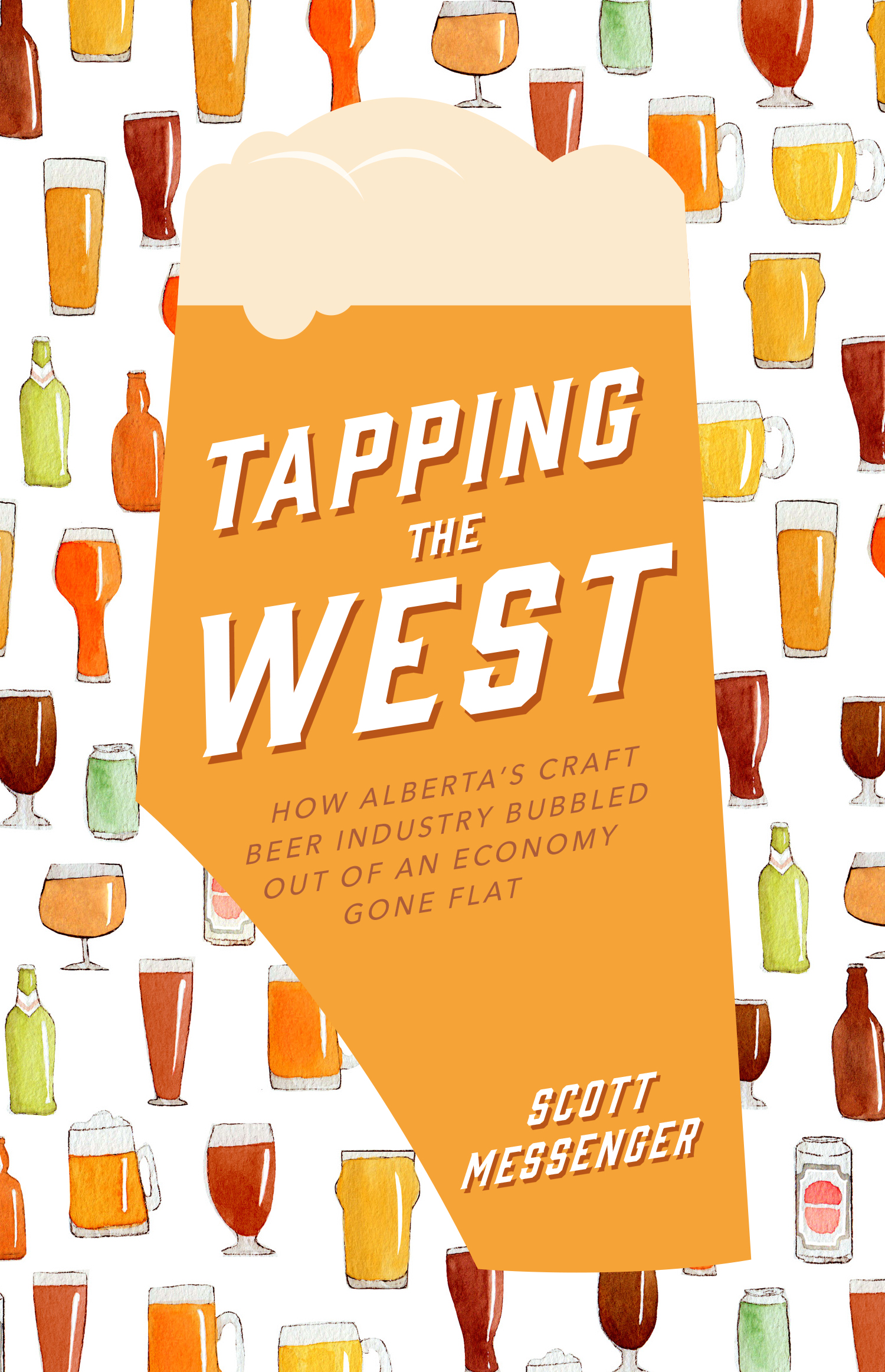BREWERS, BARLEY AND A NEW ECONOMIC ENGINE
BY IAN DOIG • PHOTO COURTESY OF TOUCHWOOD EDITIONS
Craft beer has been a wildly effective liquid ambassador for Alberta’s malting barley. The province’s craft beer industry has become emblematic of the high-quality barley grown in this province. Edmonton writer Scott Messenger’s new book Tapping the West examines the factors behind Alberta’s craft beer explosion and the highly motivated, community-minded sector its brewers have created. GrainsWest recently spoke with Messenger about beer, breweries and malting barley.

GrainsWest: How has the pandemic affected Alberta’s craft beer scene?
Scott Messenger: Anecdotally, it hasn’t been as bad as expected. It hasn’t been easy for anyone, but at least we haven’t seen the closures that some industry observers were forecasting in light of the pandemic. The community has rallied and they’re helping each other to get through this tough time. As well, businesses pivoted to a delivery model and online sales. As tough as it is, they’re figuring it out.
GW: Why did you launch your beer blog One Year of Alberta Beer in 2016? How did the blog lead to the book?
SM: In 2016, I knew very little about craft beer in Alberta. The blog was a good way to explore that. I set out to try all the breweries that were in operation at the time, a fraction of what’s available today. The interest that it generated got me thinking there’s got to be a deeper story here about the how the industry developed.
GW: How has the craft beer business model evolved since the change to provincial liquor laws in 2013?
SM: It’s certainly maturation. The beer has increased in quality and variety so much. The latest example is how well Alberta brewers did at the 2020 Canadian Brewing Awards. Alberta took almost a quarter of the medals. Calgary’s Common Crown was named brewer of the year in Canada. That’s a long way to come in six or seven years. It says a lot about the passion of the brewers here and the infrastructure behind them. The Olds College brewing program is populating these breweries with knowledgeable staff. That’s all coming together to make Alberta stand out.
The evolution also comes in terms of business. The acumen is improving. Proof of that is what happened during the pandemic. Brewers have gotten through it and they’re better for it. A few were caught without websites, online sales and deliveries figured out, but they were forced to put that stuff in place.
GW: How important has the use of Alberta malting barley been to the province’s craft beer scene?
SM: It’s hugely important. The book covers this quite a bit. As an Alberta beer drinker, it wasn’t something I was previously aware of. Bob Sutton at Rahr Malting showed me a map of the United States studded with pins, and each indicated a brewery the company has sent malt barley to. These are some of the best breweries in the world. Alberta brewers are well aware of the resource they’re able to tap into.
I love to see when I walk into a tap room, there is often bags of malt barley on display. Whether it’s Canada Malting, Rahr, Origin, Red Shed, they’re put there as a point of pride to show this is world renowned Alberta barley.
GW: How much has rural Alberta embraced the craft beer craze?
SM: When I put the book together, about a third of Alberta breweries were rural. It’s amazing to drive through Ponoka and see Siding 14 and Lacombe with Blindman. Turner Valley has Fahr Brewery, which just won best hefeweizen in the world. People take pride in the fact these are local business people. You see the connection more obviously between the field and the glass. It’s really just a pleasant experience, too, to be in those taprooms. These communities all have their own barber, butcher, baker. Add the brewer in like it was 100 years ago and we’re coming full circle. The rural environments are proving that model can work.
GW: You visited malt barley growers in researching this book. How did that experience shape your view of Alberta craft beer?
SM: Farmers were looking at the craft beer boom and at their own farms and some were seeing a direct relationship between them. A farmer I spoke to told me pea prices were down and [the China canola ban] was a problem, where is my revenue going to come from? He saw malt barley as being one of those [revenue streams] because prices were good. It gave me a deeper understanding of what it means to go to the liquor store or the brewery and buy a product made in Alberta.
GW: How valuable is Alberta’s craft beer industry as an economic engine?
SM: I don’t have exact numbers, and the government didn’t have exact numbers when [I wrote the book]. The important thing is, we have more than 100 breweries. A handful of people work at each one and the supply chains are so local. There is a handful of peripheral businesses growing up around this—mobile canning units, for example. There are several jobs created for every brewery job.
GW: In contrast, how valuable is craft beer as a cultural commodity?
SM: I’m very biased. I love the stuff, but it’s becoming ever more important. Communities rally around this product in Alberta. There’s a tourism market emerging around it, too. Especially now, when the physical distance we can travel is restricted. There’s more reason to move about within Alberta. One of the best breweries in the province is Grain Bin located in Grande Prairie and there’s also a great museum there. For me, that’s an excellent reason to go to Grand Prairie. It enriches the culture of the province because it connects back to the people who make this stuff. It binds us together in ways we may not have expected. Word is getting out beyond the province, and that gives people a different perspective of what Alberta is all about as well.
Tapping the West is available at select bookstores, online at Amazon and Indigo as well as at several Alberta brewery tap rooms.







Comments